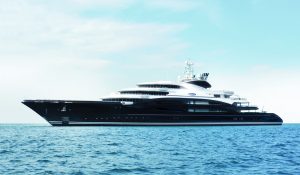Aluminium Extrusions: The Lightweight Material that Saves Time and Cost
 In offshore and marine applications, aluminium is the ideal material to cope with heavy loads and hostile environments. Just one third of the weight of steel, with far lower maintenance costs. It’s also 100% recyclable. Most importantly, it’s durable, strong and highly corrosion resistant.
In offshore and marine applications, aluminium is the ideal material to cope with heavy loads and hostile environments. Just one third of the weight of steel, with far lower maintenance costs. It’s also 100% recyclable. Most importantly, it’s durable, strong and highly corrosion resistant.
By reducing weight, aluminium reduces transportation costs. It also saves time and cost in installation and decommissioning. Further savings come because of the metal’s low maintenance qualities, and its resistance to corrosion, and because it has a considerably longer lifetime than steel applications. Extremely versatile, aluminium adapts easily to any design, and offers a smooth surface finish. So it’s well suited to many marine applications and is used widely throughout the industry today.
Through pioneering research and development, aluminium specialist Hydro extrudes this remarkable metal specifically to meet the demands of offshore and marine construction. Working with clients to create and supply machined, pre-assembled and finished components to their precise requirements, its latest alloys offer even greater structural strength for shipbuilders, all in accordance with established international marine society certifications. Aluminium also has a lower environmental impact (for example, less painting or removal of old paint), fewer transported kilograms, and it’s easier to decommission and recycle.
Both aluminium and steel are non-combustible and do not burn. However, aluminium conducts heat more effectively than steel, which assists in the dissipation of heat during a fire and allows rapid boundary cooling of exposed structures. In areas where special fire classes (such as A60) are required, Hydro applies protective materials, including mineral wool or ceramic fibres. Even with the additional weight of the protective insulation, and any active fire suppression system that may be required, the aluminium structure is still far lighter than steel.
The latest, the 5083 series, is highly resistant to corrosion in salt-water, so particularly suited to applications in the waterline area. It also offers higher weldability and predictable post-weld strength, and extruded sections maintain their flatness. They meet the stringent technical requirements for naval marine hull structure applications, with extrusions and panels as required by DNV-GL and ABS.
Read the full article in SuperYacht Industry issue 3 >






